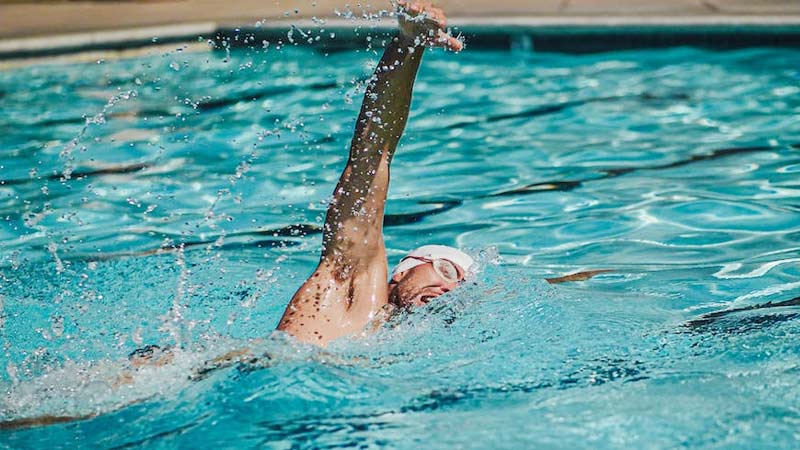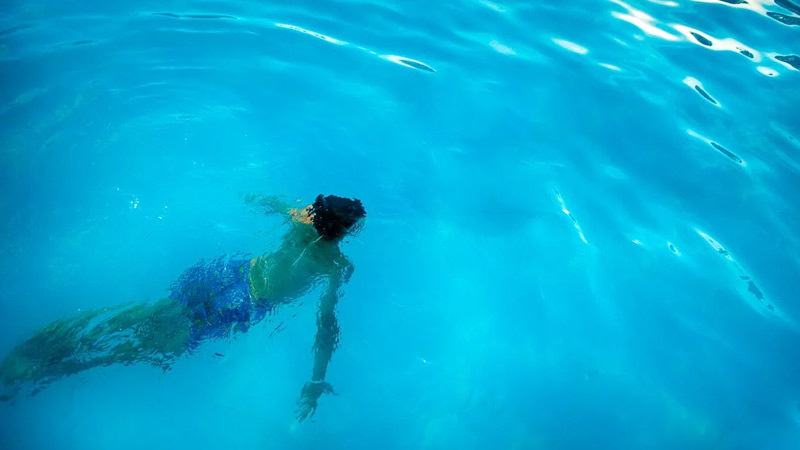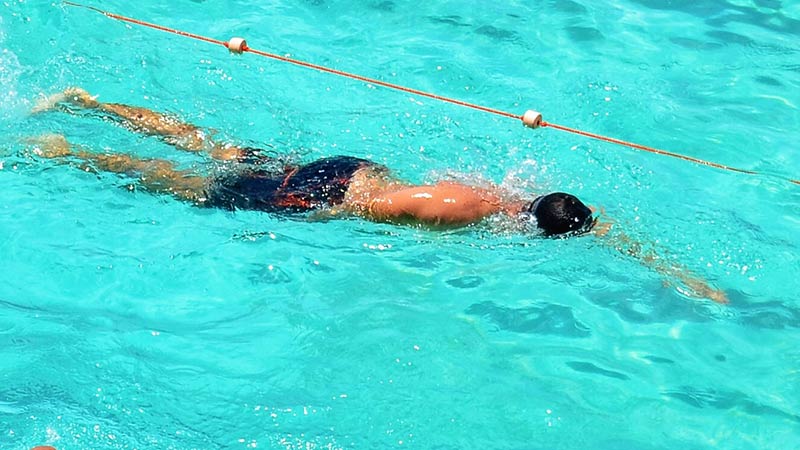Swimming is a beloved pastime for many, offering not only a refreshing escape from the sweltering heat but also a great way to exercise and unwind.
However, a common dilemma that often arises is whether it’s safe to take a dip in the pool with an open wound. The allure of the water can sometimes cloud the judgment about the potential health risks involved.
In our blog post, “Should You Swim in a Pool with an Open Wound,” we will delve into the critical considerations and offer insights into the risks, precautions, and recommendations surrounding this topic.
From the risk of infection to the role of chlorinated water, we’ll address the concerns that often weigh on the minds of swimmers with open wounds.
By the end, you’ll be better equipped to make an informed decision that balances your love for swimming with your commitment to personal well-being. Stay focused.
What Is the Open Wounds Summing Pool?
It suggests that individuals with open wounds should exercise caution when swimming in open water, such as pools or natural bodies of water, to prevent potential infection or complications.
To protect against infection and promote peace of mind, it’s advisable either to refrain from swimming with open wounds or to use sealed, waterproof bandages that minimize contact between the wound and water.
This precautionary measure is essential to maintain good health and ensure that wounds can heal without complications.
Should You Swim in a Pool with an Open Wound?

It’s a common matter to be confused about whether swimming with an open wound is safe or not. Swimming with an open wound can be a source of confusion, as the decision to do so depends on several factors.
Here are some elaborated points to consider when deciding whether it’s safe to swim in a pool with an open wound:
Risk of Infection
One of the primary concerns is the risk of infection.
Pools, especially public ones, contain a mix of chemicals and bacteria that can potentially enter the open wound, leading to infections.
This risk is higher if the wound is not properly sealed.
Wound Type and Size
The type and size of the wound matter. Smaller, superficial wounds may be less susceptible to infection than larger, deeper ones.
Surface cuts and scrapes can often be protected by waterproof bandages, but deeper wounds may require more caution.
Proper Wound Protection
Waterproof bandages or dressings can provide an effective barrier between the wound and water, reducing the risk of infection.
Ensuring that the dressing is securely sealed and water-resistant is crucial for safe swimming with an open wound.
Pool Regulations
Public pools typically have rules and regulations regarding swimming with open wounds. Some may require that open wounds be adequately covered, while others might prohibit swimming altogether.
Adhering to these rules is essential for the safety of both the swimmer and other pool users.
Personal Health
Individual health conditions can also influence the decision. People with compromised immune systems or diabetes, for example, may be more susceptible to infections and should be extra cautious.
If in doubt, it’s advisable to consult with a healthcare professional for guidance.
In general, while swimming with an open wound is not recommended due to the risk of infection, it may be possible with proper wound protection and adherence to pool regulations.
Pool Water and Contamination Regarding Open Wound
Contamination of pool water and the potential risks it poses in the context of an open wound is a critical concern. Here are some key points addressing this issue:
Bacterial Presence
Pool water can contain various bacteria, including both harmless and harmful strains.
Common pathogens like E. coli can be found in pools, especially when hygiene and water quality are not adequately maintained.
When you have an open wound, these pathogens can enter the wound, leading to infection. This is particularly concerning in crowded or poorly maintained public pools.
Chlorine and Disinfection
While chlorine is used to disinfect pool water and kill bacteria, it may not be entirely effective in rapidly eliminating all pathogens.
Additionally, chlorine can react with organic matter in the water to form disinfection byproducts that may irritate the wound or skin. Pools with inadequate chlorine levels pose a higher risk.
Foreign Particles
Pool water can carry small foreign particles, such as dirt, sand, and debris, which can easily enter an open wound.
These particles can introduce contaminants and further complicate the healing process.
Chemical Imbalance
Improperly balanced pool water with high or low pH levels can be harsh on wounds.
Highly acidic or alkaline water can exacerbate discomfort and slow down the healing process. It’s essential for pool operators to maintain proper chemical balance to minimize this risk.
Waterborne Illnesses
In addition to bacteria, pools can also host waterborne parasites like Cryptosporidium, which are resistant to chlorine and can cause illness.
If the parasite enters an open wound, it can lead to more severe health complications.
Health Risks of Swimming with Open Wounds

Swimming with open wounds can pose various health risks due to the potential for contamination, infection, and delayed wound healing.
Here are some points detailing the health risks associated with this practice:
Infection Risk
Open wounds create a direct pathway for harmful bacteria, viruses, and other pathogens to enter the body.
Swimming in pools or natural water bodies increases the risk of infection as the water may contain various microorganisms.
Infections can lead to localized problems such as cellulitis or more severe systemic infections if the pathogens enter the bloodstream.
Delayed Healing
Exposure to water can soften the protective scab or clot that forms over the wound, slowing the natural healing process.
This can extend the time it takes for the wound to close and increase the risk of complications like excessive scarring.
Waterborne Pathogens
Swimming in natural bodies of water, such as rivers or lakes, can introduce additional risks. These environments may contain waterborne pathogens and parasites that can cause waterborne illnesses.
Open wounds provide these pathogens with a direct entry point into the body, potentially leading to conditions like swimmer’s itch, schistosomiasis, or other waterborne infections.
Chlorine and Irritation
Swimming in chlorinated pools can irritate open wounds. Chlorine is a strong chemical disinfectant used to maintain water quality, but it can also cause skin and wound irritation.
Prolonged exposure to chlorinated water with an open wound can exacerbate discomfort and hinder the healing process.
Secondary Complications
Infection from swimming with an open wound can lead to secondary complications, such as fever, increased pain, and localized inflammation.
Severe infections can result in cellulitis, abscess formation, or even more serious conditions like sepsis if left untreated.
Precautions and Recommendations for Swimming with a Scabbed Wound

Swimming with a scabbed wound can be less risky than with an open wound, but precautions are still necessary to ensure proper healing and minimize the risk of infection.
Here are some precautions and recommendations for swimming with a scabbed wound:
Waterproof Dressing
If you have a scabbed wound and intend to swim, it’s advisable to use a waterproof dressing or bandage specifically designed for aquatic environments.
This will provide an extra layer of protection, keeping the wound and scab dry during your swim.
Chlorine and Pool Hygiene
Opt for swimming in well-maintained, chlorinated pools over natural water bodies.
Chlorine helps kill bacteria in the pool water, reducing the risk of infection. Ensure the pool has appropriate hygiene standards and water quality maintenance practices.
Avoid Submerging
If possible, avoid fully submerging the scabbed wound. Try to keep the wound above water whenever you’re in the pool.
You can either swim at the surface or use a flotation device to keep the affected area dry.
Aftercare
After swimming, carefully clean the wound and the area around the scab to remove any potential contaminants from the pool.
Apply an antiseptic ointment and reseal the wound with a waterproof dressing to prevent infection.
Watch for Signs of Infection
Keep a close eye on the wound for any signs of infection, such as increased redness, warmth, swelling, or discharge.
If you notice any of these symptoms, consult a healthcare professional promptly for assessment and treatment.
It’s important to remember that even with these precautions, there’s still a level of risk associated with swimming with a scabbed wound.
If the wound is large, deep, or in an area that’s difficult to protect adequately, it may be best to avoid swimming until the scab has healed completely to reduce the risk of complications.
Pool Rules and Regulations for Swimming with Cuts and Scrapes

Public and private pools often have specific rules and regulations regarding swimming with cuts and scrapes to ensure the safety and health of all swimmers.
Here are some points on typical pool rules and regulations in this context:
No Swimming with Open Wounds
Many pools have a strict policy that prohibits individuals swimming in chlorine pool with open wounds, cuts, scrapes, or any type of broken skin from swimming.
This rule is in place to minimize the risk of contamination of the pool water and to prevent the potential spread of infections.
Waterproof Coverings
Some pools may allow individuals with minor cuts or scrapes to swim if the wound is adequately covered with waterproof bandages or dressings.
However, these coverings must be securely sealed to prevent water from entering and contaminating the wound.
Inspection and Compliance
Pool staff may inspect wounds and bandages to ensure compliance with pool regulations. They have the authority to deny access to individuals not following the rules, as this can pose a risk to others in the pool.
Health and Safety of All Swimmers
The primary aim of these rules is to safeguard the health and safety of all pool users.
Wounds can introduce contaminants and pathogens into the pool, potentially leading to infections for the person with the wound and others sharing the pool.
Pool-Specific Guidelines
Each pool or aquatic facility may have its own set of rules and guidelines regarding swimming with cuts and scrapes.
These rules could vary based on factors like pool size, water treatment methods, and local health regulations.
It’s essential for swimmers to familiarize themselves with the specific rules of the pool they plan to visit.
Swimming pool rules and regulations regarding cuts and scrapes aim to strike a balance between allowing people to enjoy the pool while maintaining a safe and sanitary environment.
Adhering to these rules is not only considerate of fellow swimmers but also essential for public health and safety.
FAQs
Can you swim in a pool with an open wound?
Swimming in a pool with an open wound is generally discouraged. Pool water can contain bacteria, increasing the risk of infection. It’s safer to wait until the wound has healed to avoid complications.
Is chlorine bad for open wounds?
Chlorine in pools can disinfect water but may irritate open wounds. While it can help kill some bacteria, it’s not a substitute for keeping wounds clean. It’s best to avoid exposing open wounds to chlorine.
Can you swim with a scab?
Swimming with a scab is generally safe as long as the scab is firmly attached to the wound. However, be cautious to avoid dislodging the scab, as this can delay the healing process and increase infection risk.
Is it ok to swim with a small cut?
Swimming with a small, well-protected cut is usually safe if the wound is properly covered with a waterproof bandage or dressing. It’s essential to keep the cut dry and protect it from pool water.
Can you swim with a scabbed wound?
Swimming with a scabbed wound is generally safe if the scab is firmly attached, indicating the wound is in the later stages of healing. Ensure the scab is well-protected, as disturbing it may increase infection risk
Wrapping Up
The decision to swim in a pool with an open wound requires careful consideration.
While it may be possible with the right precautions, such as waterproof bandages, pool selection, and good wound care practices, the risk of infection is a real concern.
Health should always be the top priority, and if you have any doubts or concerns about the state of your wound, it’s best to consult with a healthcare professional.
Furthermore, following pool rules and regulations is essential to ensure the safety and well-being of all swimmers.
Remember, there will be many more opportunities to enjoy the water once your wound has healed properly.
By making informed decisions and prioritizing your health, you can ensure a safe and enjoyable swimming experience for yourself and those around you. Best of luck.








